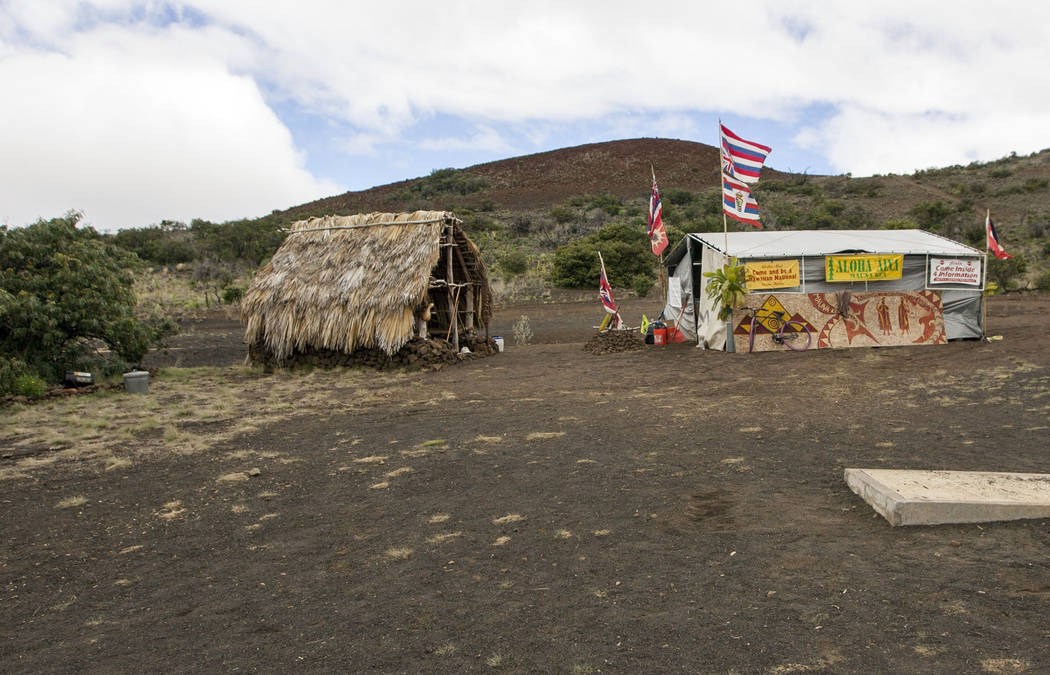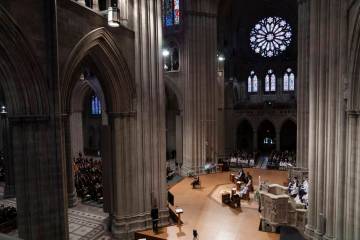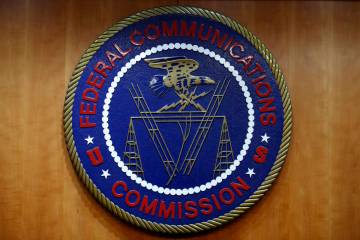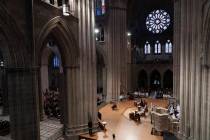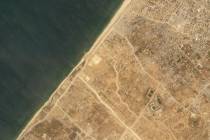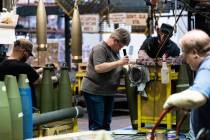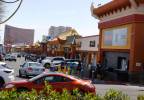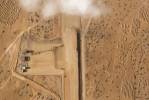Opponents still fighting telescope project in Hawaii
HONOLULU — One of Hawaii’s most divisive issues is centered on a largely barren, wintry mountain — its peak the highest point in the state — accessible via vehicles with four-wheel drive that can navigate a steep gravel road with sharp switchbacks. Breathing can be difficult up there at an elevation of nearly 14,000 feet.
The $1.4 billion Thirty Meter Telescope project on Thursday won key state approval to join other telescopes atop the dormant volcano, but passionate protesters vowed to continue fighting construction on land that’s sacred to Native Hawaiians.
Their willingness to endure frigid nights camped on the mountain and to be arrested proved successful in blocking construction in the past.
“For the Hawaiian people, I have a message: This is our time to rise as a people,” said Kahookahi Kanuha, a protest leader. “This is our time to take back all of the things that we know are ours. All the things that were illegally taken from us.”
Scientists, even those who are Native Hawaiian, revere the mountain for its summit above the clouds that provides a clear view of the sky with very little air and light pollution.
What the telescope will do
The telescope will allow astronomers to reach back 13 billion years to answer fundamental questions about the advent of the universe, touts a website for the project: “In the nearby universe, with TMT, astronomers will be able to discover and characterize, in detail, planets orbiting stars other than the Sun. There is the potential to examine these planets for signs of life beyond the Earth: this would be one of the most important discoveries of all time.”
Telescope project officials don’t have any immediate construction plans and will look at what the next steps will be, said spokesman Scott Ishikawa. They’ve said previously they want to resume construction in 2018.
“In moving forward, we will listen respectfully to the community in order to realize the shared vision of Maunakea as a world center for Hawaiian culture, education and science,” TMT International Observatory Board Chairman Henry Yang said in a statement.
Richard Ha, a Native Hawaiian farmer who supports the project, urged opponents to avoid confrontation.
“The possibility of getting the best telescope in the world … I don’t feel is the right battle to fight,” he said. “It will hurt our own people.”
While opponents say constructing the telescope will desecrate Mauna Kea, supporters tout the instrument’s ability to provide long-term educational and economic opportunities.
“This was one of the most difficult decisions this board has ever made,” state Board of Land and Natural Resources Chairwoman Suzanne Case said in a statement about the 5-2 decision.
Plans for the project date to 2009, when scientists selected Mauna Kea after a five-year, around-the-world campaign to find the ideal site for what telescope officials said “will likely revolutionize our understanding of the universe.”
The project won a series of approvals from Hawaii, including a permit to build on conservation land in 2011. Protesters blocked attempts to start construction. In 2015, the state Supreme Court invalidated the permit, saying the board’s approval process was flawed, and ordered the project to go through the steps again.
Activists try to disrupt project
Protests disrupted a groundbreaking in 2014 and intensified after that. Construction stopped in 2015 after 31 demonstrators were arrested for blocking the work.
A second attempt to restart construction a few months later ended with more arrests and crews retreating.
Mehana Kihoi said being arrested while praying on the mountain was one of the most traumatic experiences of her life. She started going there to help heal from domestic violence, Kihoi told the land board earlier this month.
“For years, I carried grief and pain … until I went to the mauna,” she said, using the Hawaiian word for mountain.
Some say fighting the telescope has awakened a new generation of Hawaiian activism. Kanuha told the board that Native Hawaiians “will determine what places are sacred and how they should be protected.”
Kanuha dismissed the millions that telescope officials have paid toward educating youth on the Big Island in science, technology, engineering and math. So far, $3.5 million has been paid into the educational fund, even while the project’s construction permit was invalid.
That money isn’t the answer to improving the lives of Native Hawaiian youth, Kanuha said. Revitalization of language and culture through Hawaiian-focused education is what’s important, he said.
A group of Native Hawaiian telescope supporters formed a group called Perpetuating Unique Educational Opportunities. Some members had been against the telescope in the past, said the group’s attorney, Lincoln Ashida.
“We believe that with increased opportunities for children, that results in stronger families, which in turn benefits our community,” Ashida told the board.
A group of universities in California and Canada make up the telescope company, along with partners from China, India and Japan. Its primary mirror would measure 30 meters in diameter and be made up of 492 individual segments. Compared with the largest existing visible-light telescope in the world, it would be three times as wide, with nine times more area.
After 44 days of recent testimony before the state land board, a retired judge overseeing the hearing recommended granting the permit, with conditions that employees attend mandatory cultural and natural resources training and that employment opportunities be filled locally “to the greatest extent possible.”





